Subacromial decompression surgery can significantly alleviate pain and improve mobility for individuals suffering from shoulder impingement. However, achieving a successful outcome depends greatly on adhering to proper postoperative care and following a structured recovery plan. This guide outlines key aspects of postoperative care, including pain management, physical restrictions, and the typical timeline for recovery.
Immediate Postoperative Period: The First 1-2 Weeks
- Hospital Discharge and At-Home Care
Subacromial decompression is typically performed as an outpatient procedure, meaning most patients can return home on the same day. Upon discharge, you will receive instructions for caring for your shoulder, including wound care and activity restrictions.
- Wound Care: Keep the surgical site clean and dry. Follow your surgeon’s advice on changing bandages and avoid soaking the area (e.g., in baths or pools) until the incisions have healed.
- Sling Usage: You may be provided with a sling to support your arm for the first few days, particularly for comfort and to minimize unnecessary movement.
- Pain Management
Postoperative pain is normal and can be effectively managed with a combination of medications and non-pharmacological techniques.
- Medications: You’ll likely be prescribed a short-term course of pain relief medications, such as acetaminophen or NSAIDs. In some cases, stronger painkillers may be prescribed for the initial days.
- Cold Therapy: Applying ice packs to the shoulder for 15-20 minutes several times a day can reduce swelling and numb the area, alleviating discomfort.
- Elevation: Keeping your arm supported in an elevated position can help decrease swelling during the initial recovery phase.
- Physical Restrictions
- Avoid lifting heavy objects or engaging in strenuous activities.
- Refrain from driving until your surgeon advises it is safe, usually when your arm can move freely and pain is under control.
- Limit overhead movements to prevent strain on the healing shoulder.
Weeks 2-6: Early Recovery and Physical Therapy Initiation
During this phase, you’ll transition from rest to a structured rehabilitation program to begin restoring shoulder function.
- Physical Therapy
- Passive Movements: A physical therapist will guide your shoulder through gentle passive movements to prevent stiffness without straining the healing tissues.
- Stretching Exercises: Gentle stretches are introduced to maintain flexibility in the shoulder joint and prevent the formation of scar tissue.
- Pain Management Adjustments
As pain subsides, you can reduce or eliminate prescription painkillers. Over-the-counter options like ibuprofen can be used as needed.
- Resuming Light Activities
- Gradually increase your daily activities, such as light housework or desk work, as long as they don’t involve heavy lifting or repetitive shoulder movements.
- You may begin using the affected arm for light, pain-free tasks under your doctor’s guidance.
Weeks 6-12: Regaining Strength and Mobility
At this stage, your shoulder should show significant improvements in mobility and comfort. Physical therapy becomes more active and goal-oriented.
- Progressive Strengthening
- Active Exercises: Start using your shoulder for active exercises, such as lifting your arm unassisted.
- Strength Training: Light resistance exercises targeting the rotator cuff and shoulder muscles are introduced to rebuild strength.
- Increasing Range of Motion
Your therapist will focus on exercises that enhance your range of motion, enabling you to lift and rotate your arm more freely.
- Transitioning to Normal Activities
- Driving and light recreational activities, like walking or light yoga, can typically be resumed at this stage.
- Avoid heavy lifting or high-impact activities until cleared by your healthcare provider.
Month 3 and Beyond: Long-Term Recovery and Full Activity
Recovery timelines can vary depending on factors like the severity of impingement, the extent of the surgery, and individual healing rates. Most patients achieve significant improvements by the three-month mark, though full recovery can take up to 6-12 months.
- Advanced Physical Therapy
- Endurance Building: Increase the duration and intensity of resistance and endurance exercises.
- Sport-Specific Training: For athletes, therapy may focus on movements specific to their sport, such as throwing or swimming.
- Returning to Work and Sports
- Most individuals can resume full work duties and sports activities by 3-6 months, though some restrictions may apply depending on the demands of their job or chosen sport.
- Ongoing Maintenance
- Continue performing shoulder exercises as recommended by your therapist to maintain strength and flexibility.
- Monitor for any recurrence of symptoms, such as pain or restricted movement, and seek medical advice if needed.
Tips for a Smooth Recovery
- Follow Instructions: Adhere to all postoperative guidelines provided by your healthcare team, including medication schedules and activity restrictions.
- Communicate with Your Doctor: Keep your doctor informed about your progress and report any unusual symptoms, such as excessive swelling, fever, or severe pain.
- Be Patient: Recovery takes time, and it’s important not to rush into activities that could jeopardize the healing process.
Common Postoperative Questions
- How long will I need physical therapy after subacromial decompression?
Most patients participate in physical therapy for 6-12 weeks, though some may continue longer depending on their progress and activity goals. - Can I return to work immediately after surgery?
It depends on your job. Sedentary work may be possible after 1-2 weeks, while physically demanding jobs may require several months of recovery. - Is it normal to feel stiffness after surgery?
Yes, stiffness is common in the early weeks but typically improves with physical therapy and gentle stretching exercises. - When can I sleep on the operated shoulder?
You should avoid sleeping on the operated side for at least 4-6 weeks or until your doctor approves it. - What are signs of complications I should watch for?
Look out for signs such as excessive swelling, redness, discharge from the incision, fever, or increasing pain, and contact your doctor immediately if these occur.
By following a well-structured recovery plan and staying consistent with physical therapy, most individuals can achieve excellent outcomes after subacromial decompression surgery, regaining strength, mobility, and a pain-free shoulder.
